
24 Aug, 2017
Thai Foreign Ministry fam trip spotlights double-edged future facing the Kingdom
Bangkok – Courtesy of the Thai Foreign Ministry, 16 Bangkok-based foreign correspondents were treated to a whirlwind 15-hour fam trip on Aug 18 which spotlighted the double-edged future facing Thailand. While three of the stops underscored Thailand’s positive scientific, agricultural and infrastructure progress in line with its 4.0 national development policy, the last stop was a captivating encounter with two senior spokespersons of the military government which saw a feisty exchange about the kingdom’s controversial political future.
Elevating the organisation of its media fam trips to new levels, the Foreign Ministry gave the journalists a fair and balanced perspective of the crossroads at which Thailand stands today.
The initiative was taken by the Foreign Ministry’s new Director-General of Information Mrs Busadee Santipitaks and Foreign Correspondents Club of Thailand President Dominic Faulder, a veteran Bangkok-based journalist. An experienced diplomat specialising in multilateral agreements and previously accredited to the United Nations in New York, the European Union in Brussels and the ASEAN secretariat in Jakarta, Mrs Busadee said she was keen to ensure good relations with the foreign media in Thailand. The trip’s content was also in line with the Foreign Ministry’s agenda to promote Thailand’s economic opportunities.
In turn, Mr. Faulder, who has been closely involved with the FCCT for more than two decades, said that while the foreign Press corps clearly had to report the news as it happened, even though some reports may arouse the ire of Thai military authorities, it was important for them to see the big-picture and come up to speed with developments they may not otherwise be exposed to. Complimenting the Foreign Ministry for its outreach, he noted that the foreign media were not interested in taking sides. He said he had told the Foreign Ministry it could expect a turnout of between 10-20 media for the fam trip. That proved to be accurate. The total turnout of 16 journalists included a diverse representation of Japanese, European, Asian and Thai media.
This editor was the only travel industry journalist in the group. Indeed, it became apparent from the very first stop that each of the places visited will have a significant ripple-effect impact on Thai tourism.
The first stop was Food Innopolis, an innovation centre designed to build on Thailand’s bedrock agriculture sector. This fits in with the new focus at the Ministry of Tourism and Sports and the Tourism Authority of Thailand to forge stronger links with the agriculture sector, and promote campaigns such as Agrotourism and Gastronomy Tourism.
At the next stop, Siam Bioscience Co Ltd, journalists were amazed to hear about a low profile biopharmaceuticals company researching a new generation of low-cost drugs to treat various forms of cancers and autoimmune diseases projected to emerge in Asia’s aging societies. Thai expertise in this area will attract more health & wellness visitors.
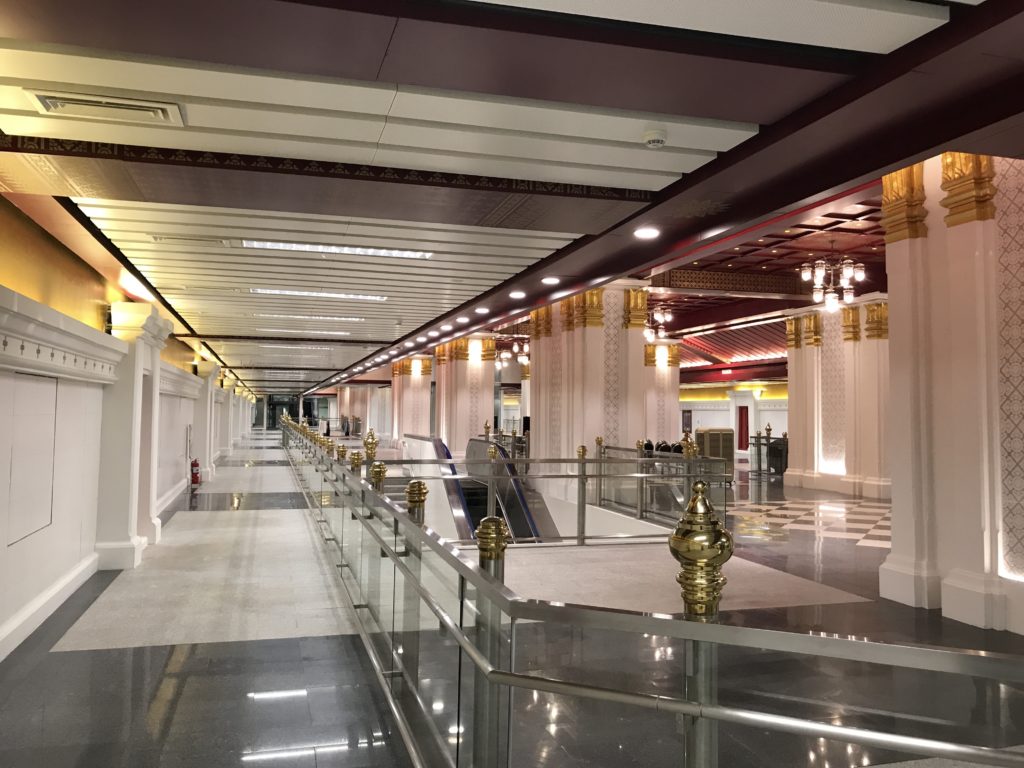
The upcoming Sanam Chai subway station in Bangkok — station or museum of culture?
At the third stop, journalists sat for a briefing in what is destined to be one of Asia’s most aesthetic mass-transit subway stations. The station, part of an extension of Bangkok’s only subway line, will be one of four art-and-culture stations being built right under the Chinatown and the Grand Palace/Temple of the Emerald Buddha areas, two of Bangkok’s most popular visitor spots.
At the fourth and final stop, two senior military officers from the Ministry of Defense and the Prime Minister’s office briefed the journalists on the complexity of Thailand’s political evolution. Although the external peace and quiet enforced by the military since seizing power in May 2014 has facilitated the tourism boom, it has come at the cost of the country’s erstwhile democratic freedoms. The duration of the trade-off will have a direct bearing on the future of tourism.
The background of the entire trip was Thailand’s 4.0 development policy which comprises of the following:
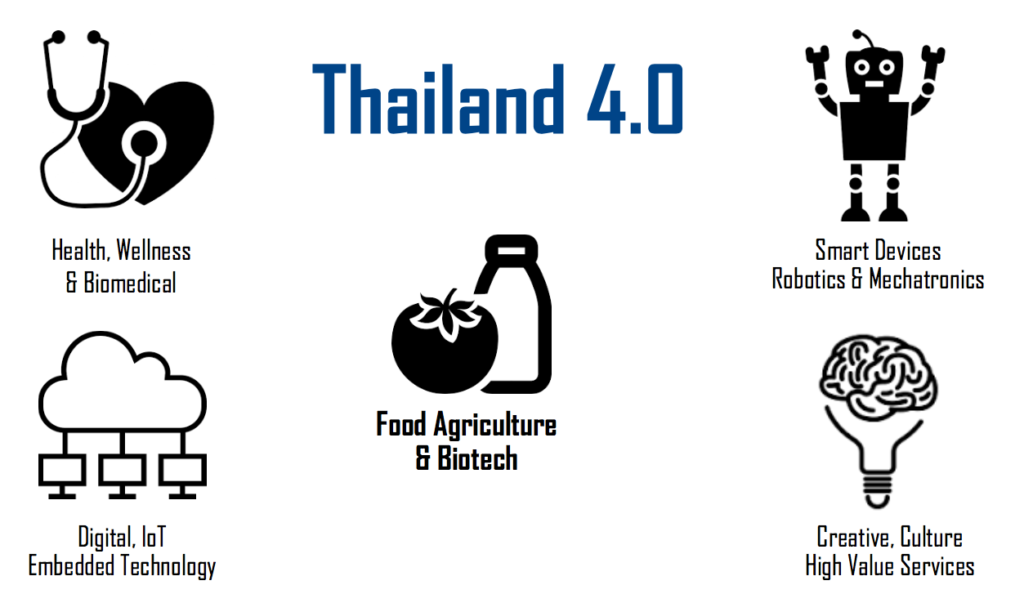
Here are some details on each of the stops:
-
Food Innopolis
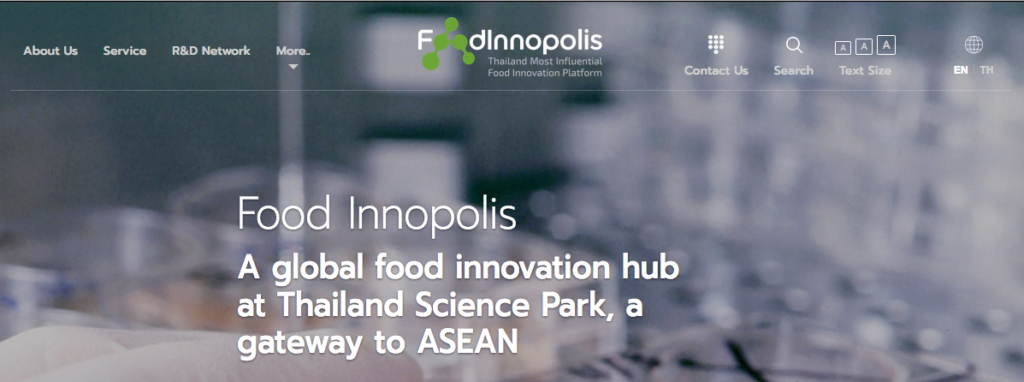
Thailand’s history, heritage and economy has been entirely based on agriculture. Known as the Rice Bowl of Asia, Thailand has long been one of the world’s leading rice-exporters. However, sluggish global prices of both cash and food crops has slashed the contribution of agriculture to the national economy to only 11%. The future opportunity lies in upgrading and innovating the content, quality, marketing and distribution along the entire agriculture value chain, and developing Thailand as Global Food Innovation Hub In ASEAN.
Located about 40 kms north of Central Bangkok is the Food Innopolis, a 60,000 m² state of the art facility designed to provide incentives and infrastructure for Thai, ASEAN and global food companies to invest in R&D. Right in the midst of a cluster of leading educational and research institutions and industrial estates, the FoodInnopolis seeks to capitalise on the following global food trends and opportunities:
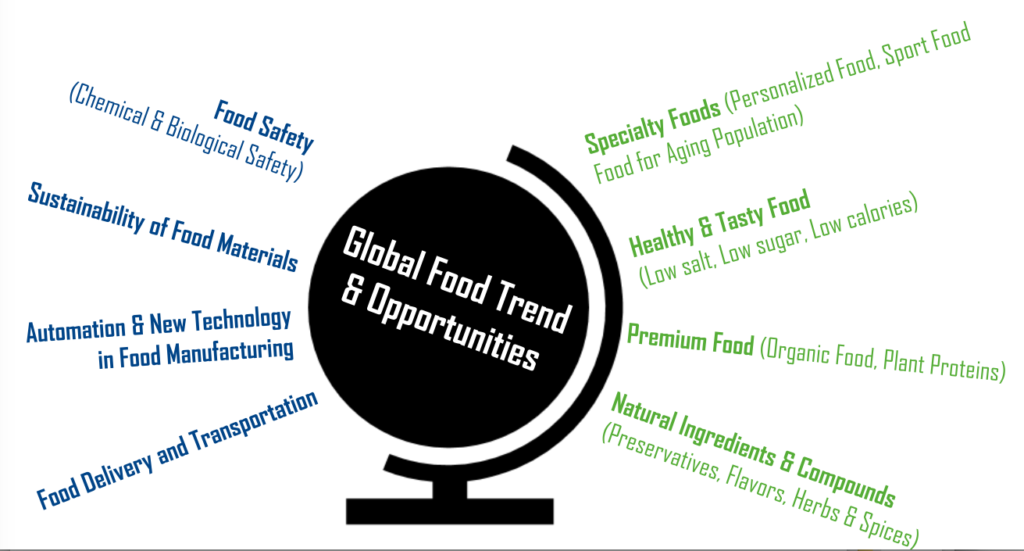
The Ministry of Science and Technology sees Thailand as being perfectly placed for this hub status. The country has all the raw materials required for the food sector. This is buttressed by the country’s strategic geographic location at the heart of ASEAN region, and excellent research capabilities and HRD cadres. The only thing needed to build on these advantages was proper research facilities and integrated nationwide resources.
These charts shows what is emerging: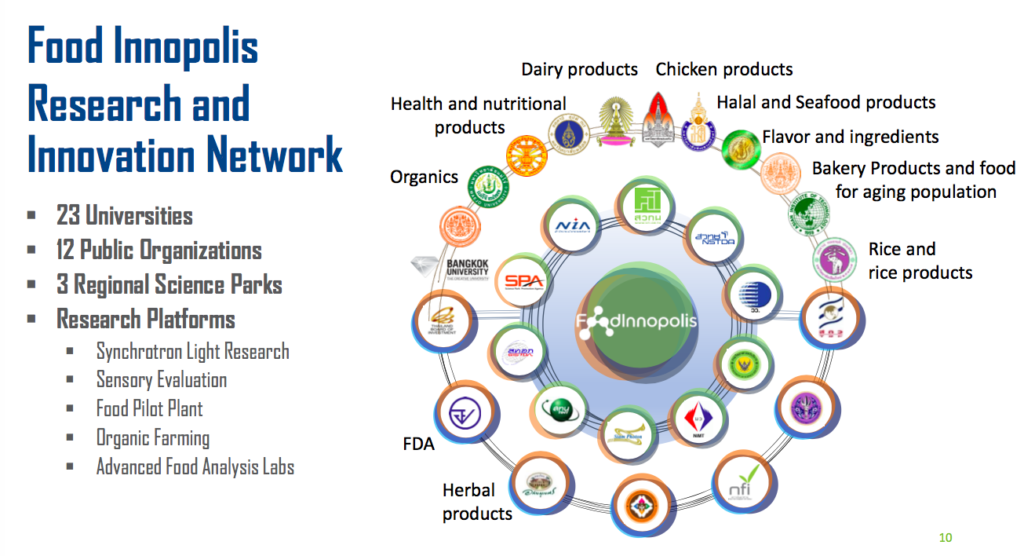
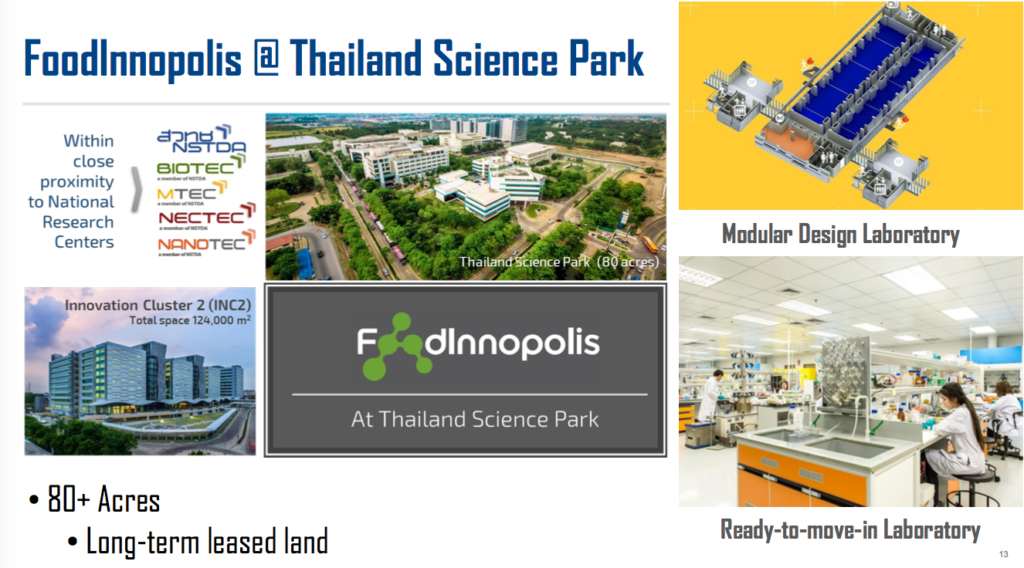
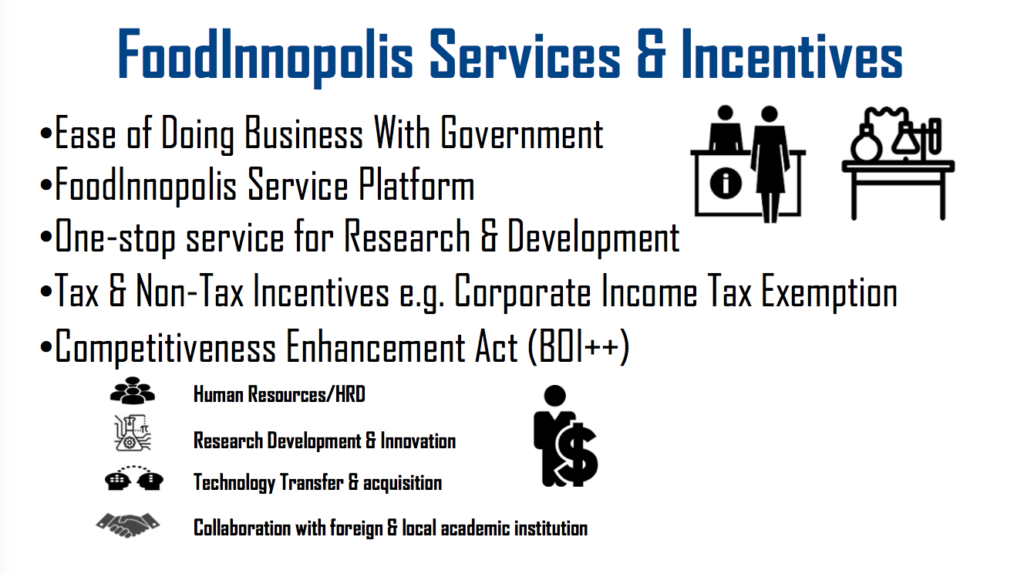
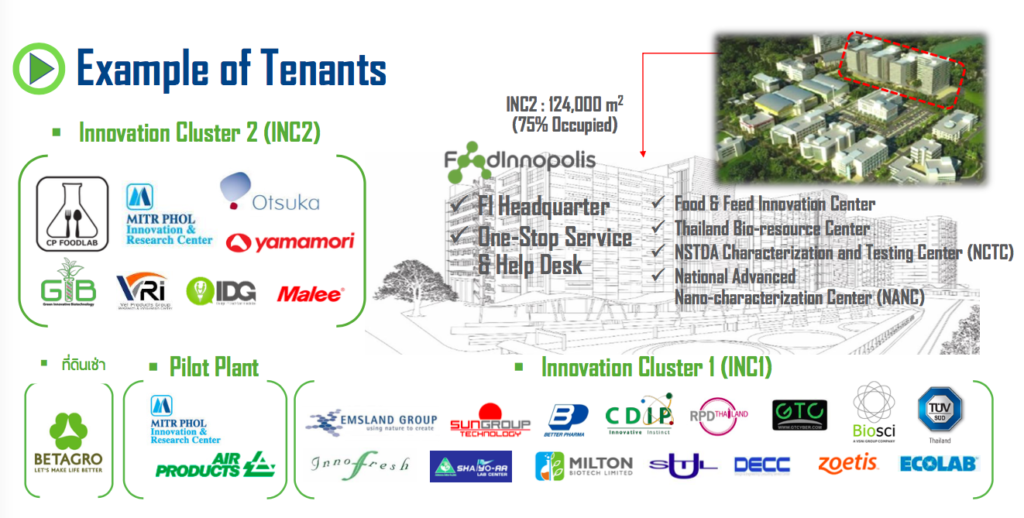
Eventually the goal is to link the Food Innopolis with other research institutes nationwide. As tourism and agriculture are now forging strategic partnerships, this R&D centre could create thousands of jobs in both.
After the Food Innopolis briefing, the media corps got an update from the Betagro Group, a major Thai conglomerate, on its business operations and how it has benefitted from a presence at Food Innopolis.
-
Siam Bioscience Company Ltd.
The first biopharmaceutical company in Thailand, Siam Bioscience was established in 2009 as a partnership between CPB Equity Co Ltd., a unit of the Crown Property Bureau, and Mahidol University, one of Thailand’s preeminent schools of learning in the medical field. The vision is to make it a global company for sustainable R&D, manufacturing, and commercialisation of biopharmaceuticals.
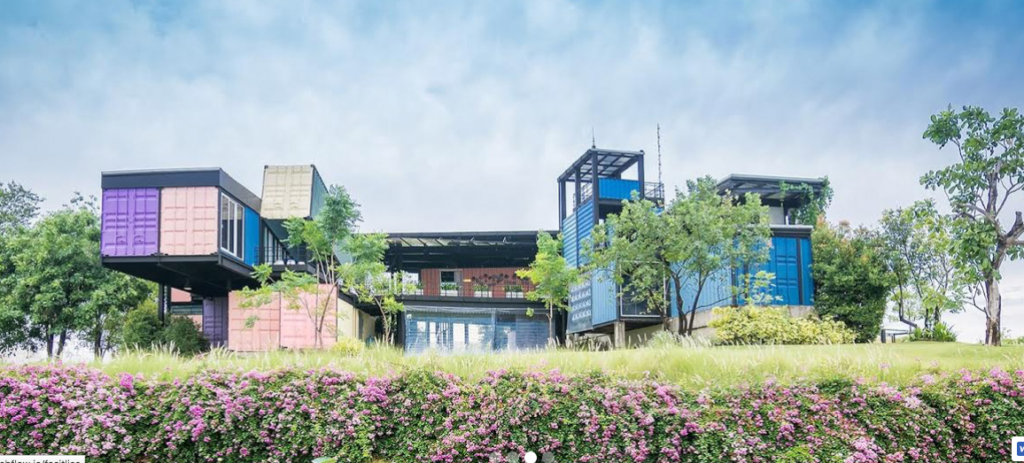
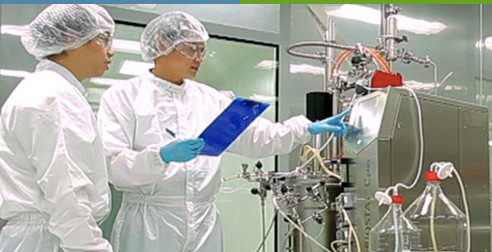
Under the Thailand 4.0 policy, the biopharmaceutical industry will help upgrade the quality of healthcare by improving accessibility to relatively inexpensive drugs for ailments that will rise exponentially with the onset of ageing societies in Thailand, ASEAN and worldwide.
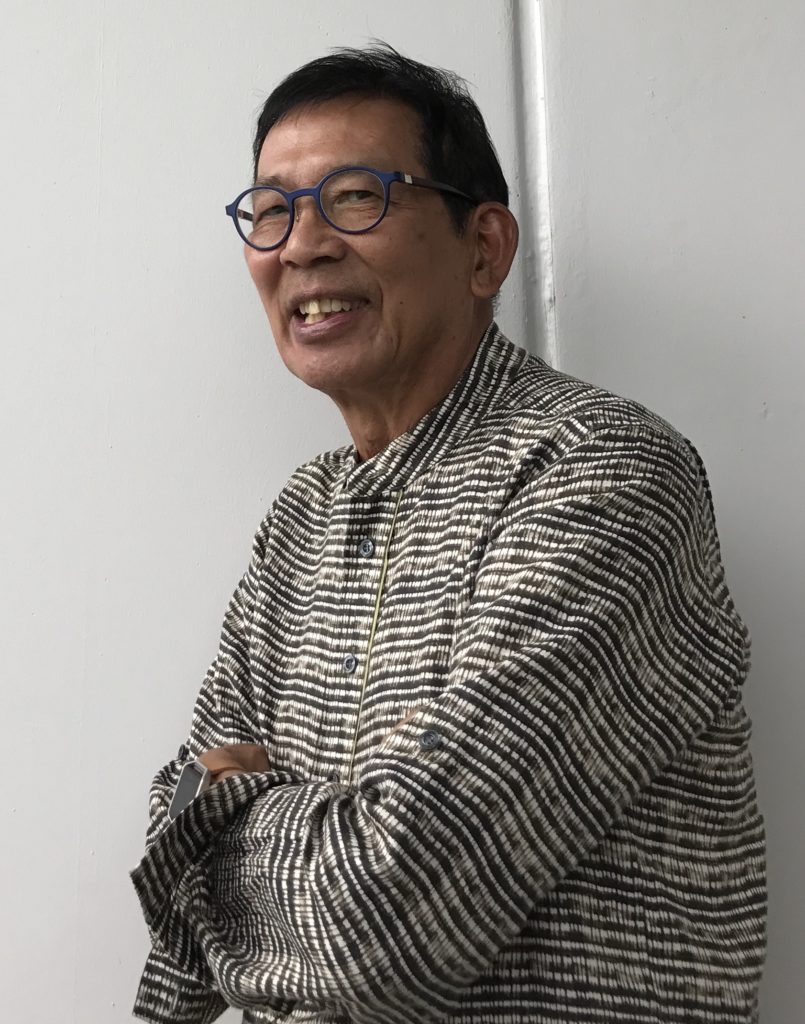 Mr Apiporn Pasawat. |
Mr. Apiporn Pasawat, Chairman of the Executive Committee, said that Thailand’s current healthcare expenditure exceeds 500 billion baht per year, largely due to the cost of imported medicines produced by the pharmaceutical multinational corporations. Most of these imported medicines, such as painkillers and analgesics, cholesterol-lowering agents and most antibiotics, are derived from totally-synthesized chemicals. However, biopharma drugs are all derived from biological sources such as blood components, cells, genes and protein.
According to Mr. Apiporn, the global prescription drug market is expected to grow by an annual average of 6% to reach nearly US$1.5 trillion by 2022. Five of the top 10 drugs in the world in 2017 are for the treatment of rheumatoid arthritis and psoriasis, non-Hodgkin’s lymphoma, colorectal cancer and breast cancer. These ailments are the primary targets of the biopharma market, whose share of global drug sales has grown from 11% to 20% during the past 15 years. It is projected at $121 billion in value in 2017, up from only US$ 56 billion in 2002. For Thailand alone, it is projected to have an export value of two billion baht by 2022.
Of the various R&D partnerships signed by Siam Bioscience, the most conspicuous is with Cuba’s Centre of Molecular Immunology to invest up to 3 billion baht ($86.5 million) in an R&D and distribution centre targeting the ASEAN market. Because of the decades-long U.S.-led economic sanctions, Cuba became self-reliant in many areas, including health care. Biopharma is one area of expertise and the Cubans are keen to share it. The JV with the Cubans will produce six drugs targeted the ailments mentioned above. This will make Thailand self-reliant in healthcare, reduce imports and improve the overall security of the country.
However, significant challenges loom. Different ASEAN countries have different FDA licensing and distribution regulations. While some markets such as Myanmar are expected to be easier to penetrate, other potentially large markets such as Indonesia and Philippines will be more difficult. The global pharmaceutical corporations, whose business is likely to be most affected, are also expected to put up legal and regulatory roadblocks.
These impediments could be a major blessing for the Thai health & wellness sector. Once biopharma drugs start generating results, ASEANites who cannot get access to them in their own countries will simply head for Bangkok for treatment.
-
The Blue Line Extension Project
Media-briefings are rarely given in subway stations, but that is exactly what transpired at the third stop – the upcoming Sanamchai station that will be part of an extension of the Bangkok’s only mass-transit underground. A total of four stations will facilitate visitor access to the city’s most popular tourist spots — the entire Grand Palace area and Chinatown. All four are being designed to look more like museums, temples or art galleries.
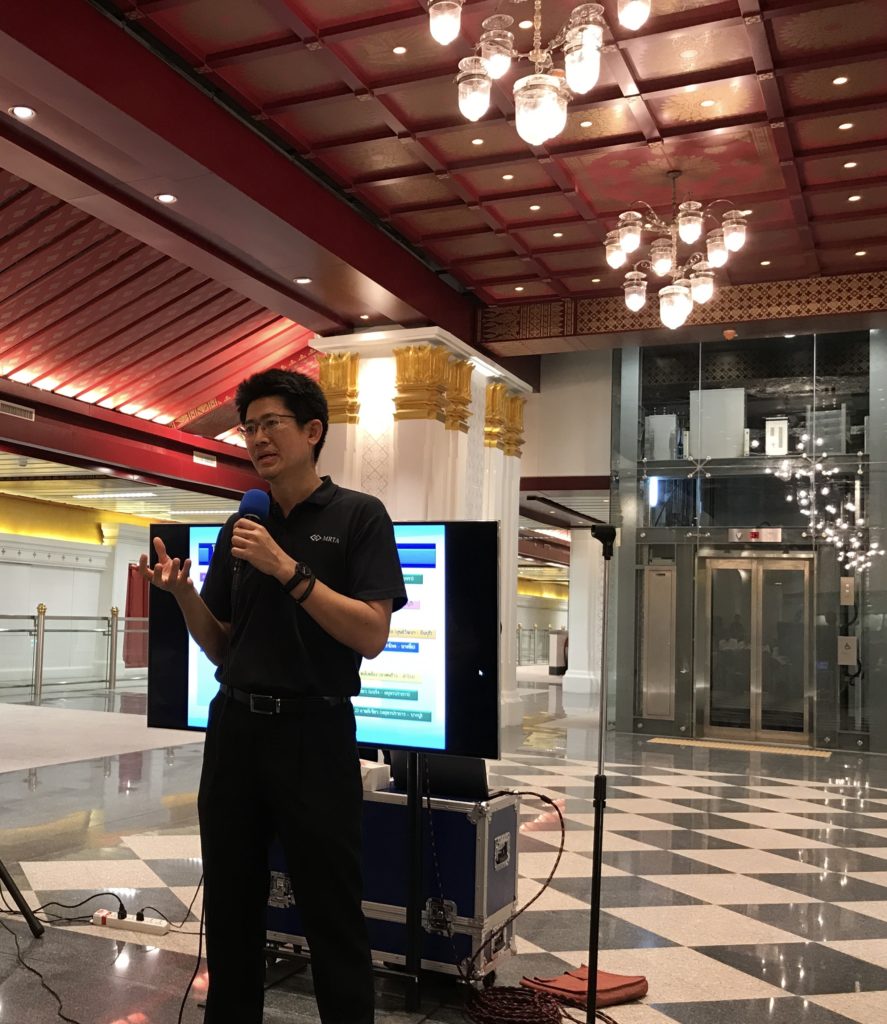
Mr. Vithaya Punmongkol, Assistant Governor, Mass Rapid Transit Authority of Thailand.
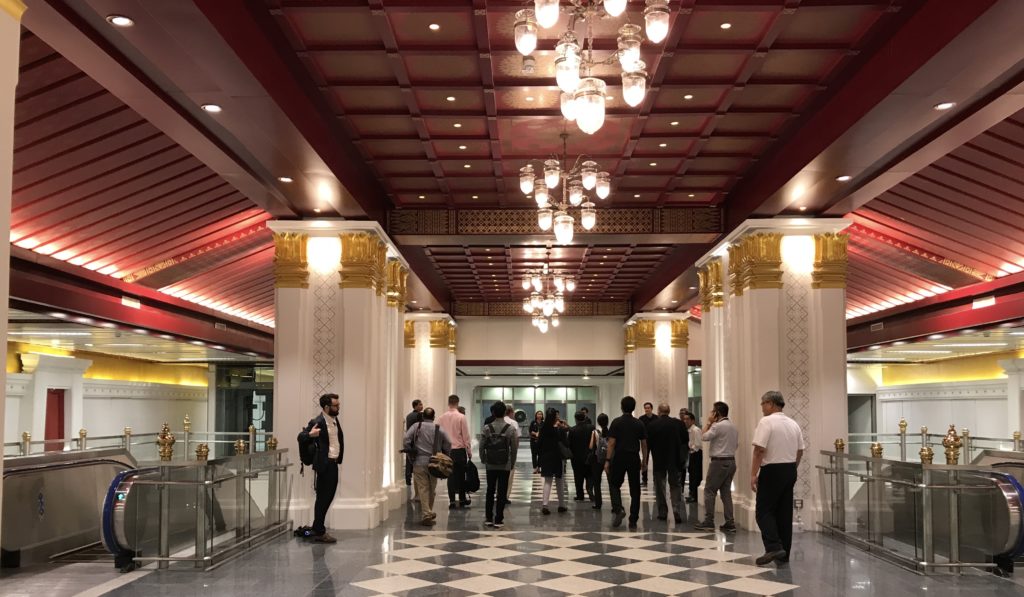
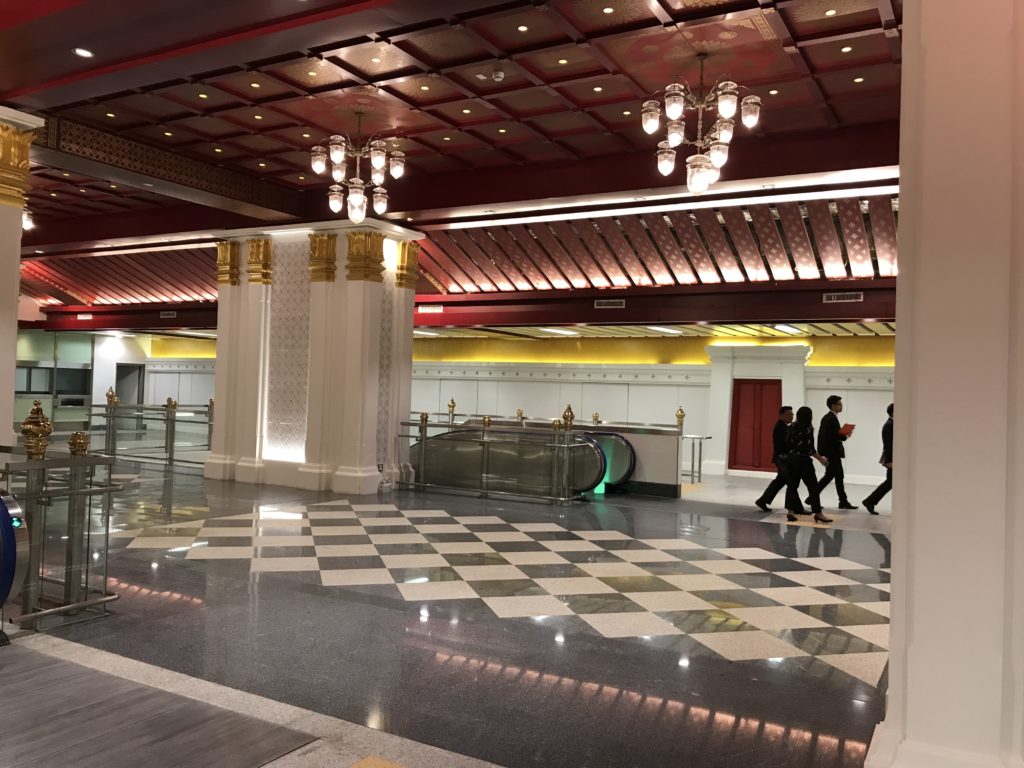
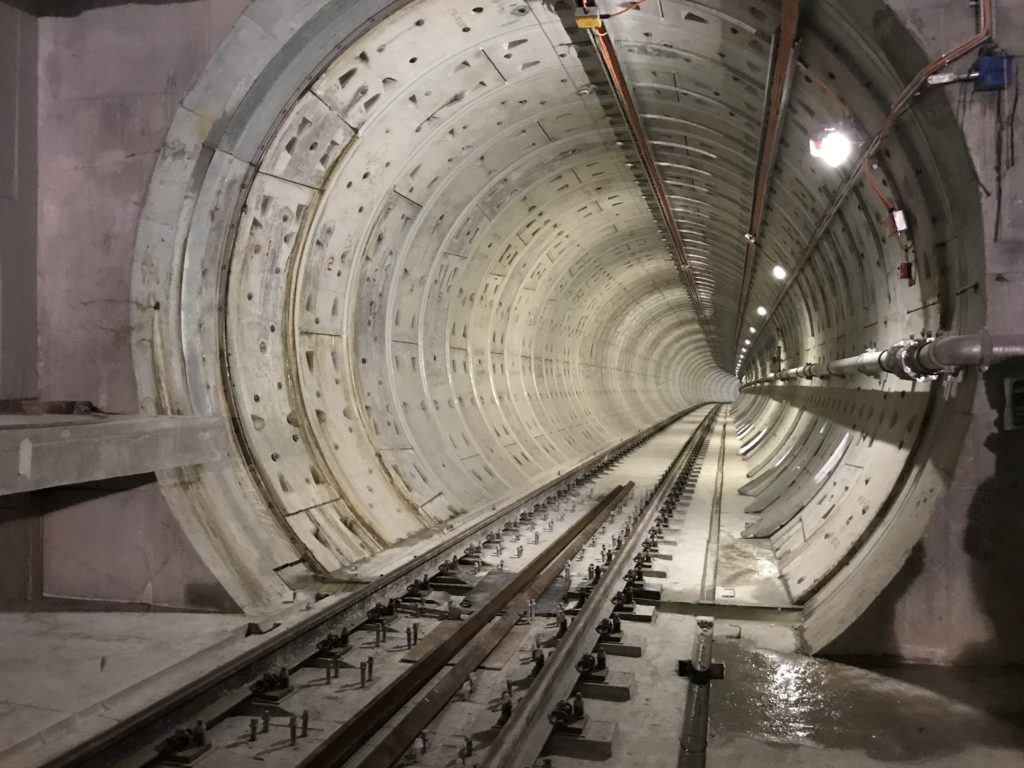
The total length of the subway extension will be approximately 14 km, with 4 underground stations and 7 elevated stations.
It has been an enormously complicated engineering exercise. Chinatown is one of the oldest parts of Bangkok, with narrow streets and some important buildings of immense cultural importance. Work has had to be done within the restrictions, with minimum possible disruption to traffic and public movement.
One of the most important engineering challenges was to tunnel 10 m under the riverbed which is already 20 m deep. This means that tunnelling had to be done 30 m below the surface. The engineers also had to deal with Bangkok’s soggy subterranean soil conditions. During construction, many artefacts of archaeological importance were found including Buddha images, pots, urns and statues. All have been carefully preserved.
The tracks have been laid and rolling-stock testing is underway. The project is both over budget and delayed. Work started in 2011 and is supposed to have been finished this year but is now projected to be done by 2019 September.
Once opened, visitors will be overwhelmed by the artistic grandeur of the stations on their way to/from the Grand Palace and Chinatown. Both tourist spots will also benefit from reduced vehicular traffic and tour bus parking congestion.
-
The Reconciliation Process
Perhaps the most important stop was the last, listed on the FCCT itinerary as a “Special Talk on the latest developments on the reconciliation process by Spokesperson of the Ministry of Defense.” The economic and scientific progress envisaged by the Thailand 4.0 policy will prove elusive if political and social conflicts persist. Thailand’s status as a democratic “Land of the Free” was once its most important competitive and comparative advantage. No longer. According to the Ministry of Defense spokesman Maj-Gen Kongcheep Tantravanich, “We now have to accept that the situation is not good. It would be easy to solve the problems if the social mood cools down.”
The government’s cooling-down strategy is to draft a Social Contract, with mass public participation. Hundreds of citizens from all walks of life nationwide are attending meetings to give them a voice in the reconciliation process. The military has also drawn upon many of the country’s social scientists and academics for their input.
All this, Maj-Gen Kongcheep said, has generated “valuable information” for the Social Contract which will be publicly disseminated, in both Thai and English. The goal is to find “common ground and develop a consensus on reconciliation, create more understanding among the people, learn from the lessons of history and prevent the same problems from recurring in future.”
This editor asked the spokesman how is it that a country that had never been colonised, guided by a great religion (Buddhism), reigned for 70 years by a wise and benevolent monarch and blessed with abundant natural resources, could land up in this mess. He cited a roster of problems — conflicts of interest amongst political leaders, corruption, injustice, social and economic inequality, all worsened by the social media revolution and its misuse to spread lies, distortions and hatred.
Although democratically elected, some parliamentarians did not abide by the rules, leading to a dysfunctional political system, interference in the judiciary and independent bodies, Maj-Gen Kongcheep said. Capitalist groups supported different political parties, creating more power struggles. All this created a “cycle of conflict”, he said.
The spokesman said the military had taken power in line with its constitutional status as a guarantor of national stability, safety and security, which applies to both external and internal threats. It is now stuck with trying to clean up the mess.
Now, he said, it is about building trust and “creating a new framework for living peacefully together.” He said the military had divided the various problems into short-, medium and long-term time-frames, and was dealing with them accordingly.
Maj-Gen Kongcheep affirmed that the military will not indulge in a blame game. “We don’t want the conflicts to recur because everyone was affected (by them). If we don’t have a common understanding amongst ourselves, there will be no way out. We want the people to take ownership of the Social Contract. The military will only be there to guarantee security and stand by the people. We are learning from history, and the lessons of the past. Thailand once had 100% freedom of speech. What was the result? Only more divisions and discord.”
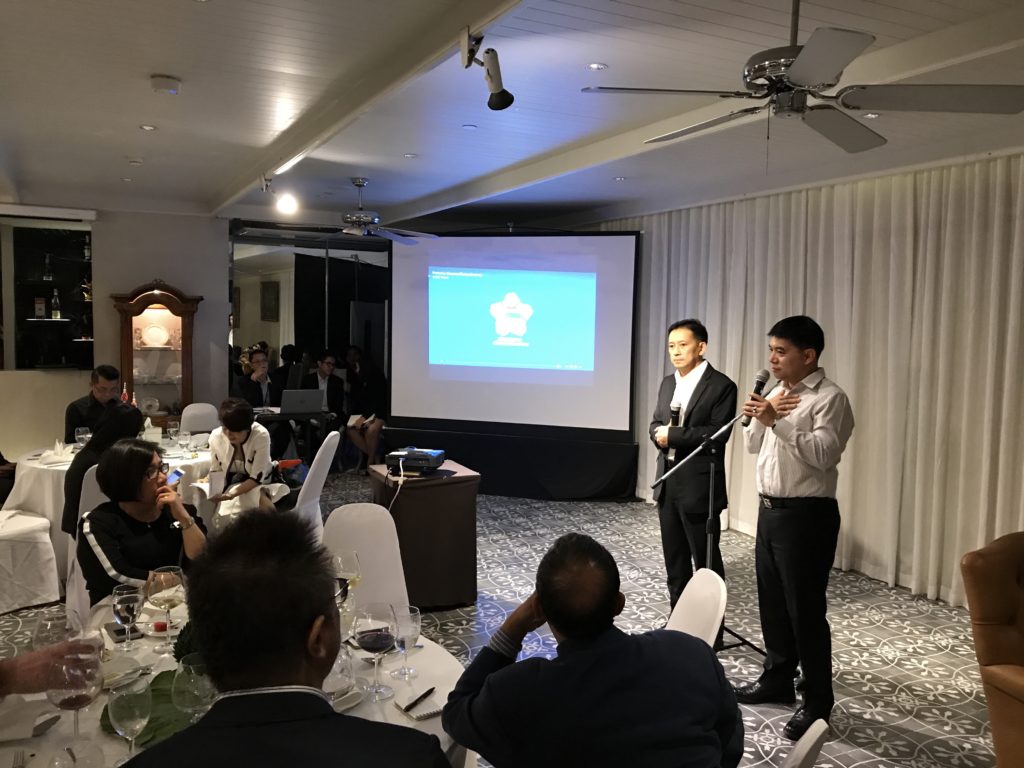
Maj-Gen Kongcheep Tantravanich and Lt-Gen Werachon Sukondhapajipak
The Ministry of Defense spokesman was joined later by another high-level officer, Lt-Gen Werachon Sukondhapajipak. The Australian-educated general, the chief liaison for the Prime Minister’s office with the foreign media, reiterated the same positions as the Ministry of Defense spokesperson.
But he was pressed by a Japanese journalist on the military government’s commitment to restoring political democracy. Another British journalist challenged him about the military’s role, noting that the military did not seem to include itself as one of the sources of Thailand’s problems. He asked what the military was doing to clean up its own act before trying to clean up the country?
Although the altercation got somewhat tense, Lt-Gen Werachon challenged the right of the foreign media to pass judgment on developments in Thailand. He urged them to leave it to the Thai people to solve their own problems. “Please give us a chance to find the best practise for our country. We have different conditions for reconciliation.” He agreed that “sometimes Thais tend to get too emotional and perhaps need to be less so.”
He also declined to be pinned down on a time-frame for the reconciliation process. While the situation was unlikely to go from black to white overnight, Lt-Gen Werachon said, even if it could go from black to ‘gray or light gray’ that will be a good enough foundation for the next generation of leaders to pick up on. The key, he said, is to ensure that “we do not see another civil war in our country.”
Conclusions
Over the past 40 years, every five-year plan prepared by the central planning agency, the National Economic and Social Development Board (NESDB), has always been based on maximising the country’s prevailing strengths, within the context of local, regional and global conditions. While this has helped the country ride out many a storm, including the 1997 financial crisis, it remains imbalanced by a conflict- and crony-ridden political system and its numerous side-effects identified in the military briefing. Thailand no longer has any claim to the moral high ground over its neighbouring countries.
The full potential of ts economic strengths and geographic advantage remains unfulfilled because of political bunfights and conflicts, most of them self-inflicted.
Perhaps the clearest explanation for the continued problems lies in the differences the way rules are applied or, as the case might be, not applied.
The first three stops all provided fine examples of systems that must follow rules and regulations at every step. None of the scientific, medical or transportation systems can afford to compromise on engineering processes, testing methods, quality standards, safety and security and a myriad of other practises required to maintain public confidence. Any failure is immediately met with an equal and opposite reaction, be it loss of business, bad publicity, legal actions, etc.
In the Thai political realm, rules are made to be broken, with little or no fear of any equal and opposite reaction. The rules-based pursuit of excellence and high standards in Thai science and technology does not apply in Thai politics. One group of law-breakers simply gets replaced by another. The “system” remains the same. In that sense, the Thai military is absolutely right – the politicians and their financial backers, the capitalists, have no one to blame but themselves for violating public trust.
This is the vital missing link in the Thailand 4.0 approach. Indeed, it opens up another thorny subject of debate: Has all the “development” of the past merely exacerbated conflicts amongst the rich and the powerful over the spoils?
Interestingly, the late King Bhumibhol’s wisdom-based development model, the “Sufficiency Economy” was not mentioned even once by any of the presenters. There is still hope that it may be addressed in the “Social Contract”. If not, the current set of problems will simply be passed on to the next leaders, exacerbated even further by other onrushing problems such as environmental degradation and socio-cultural conflict.



Liked this article? Share it!